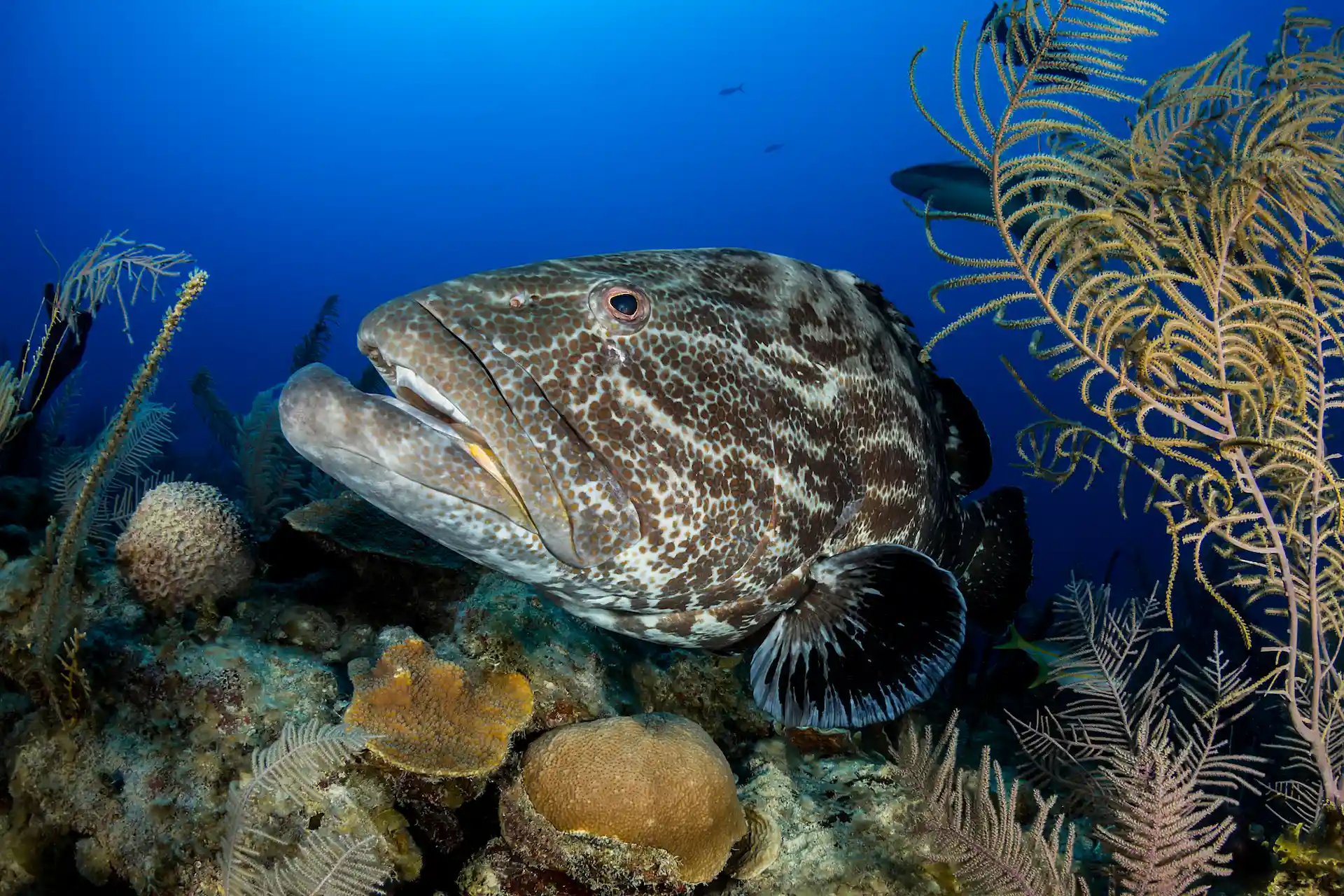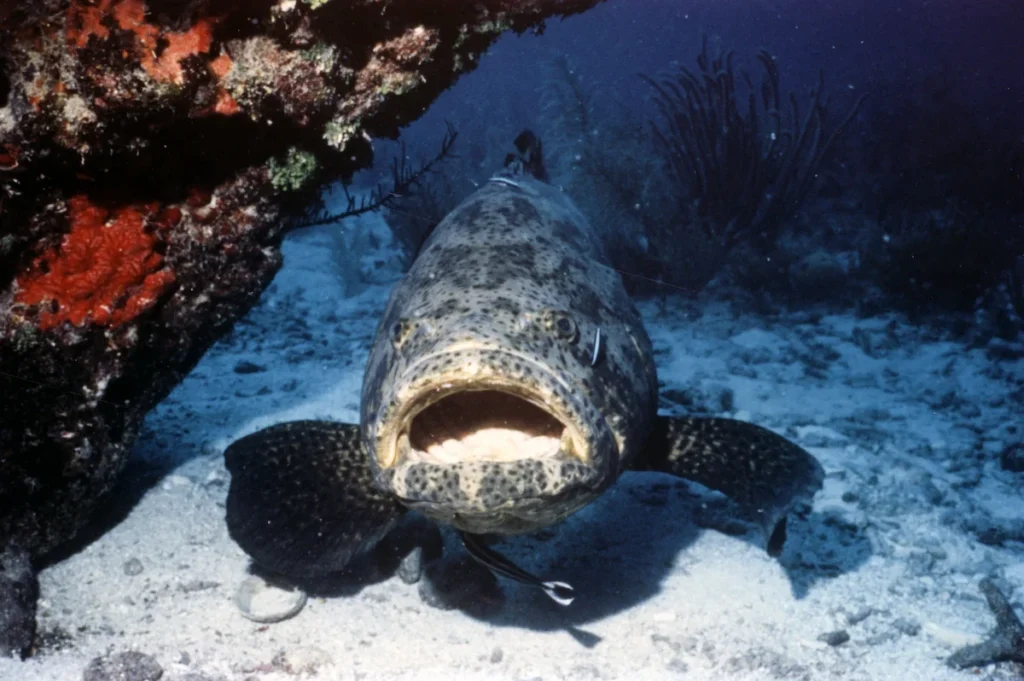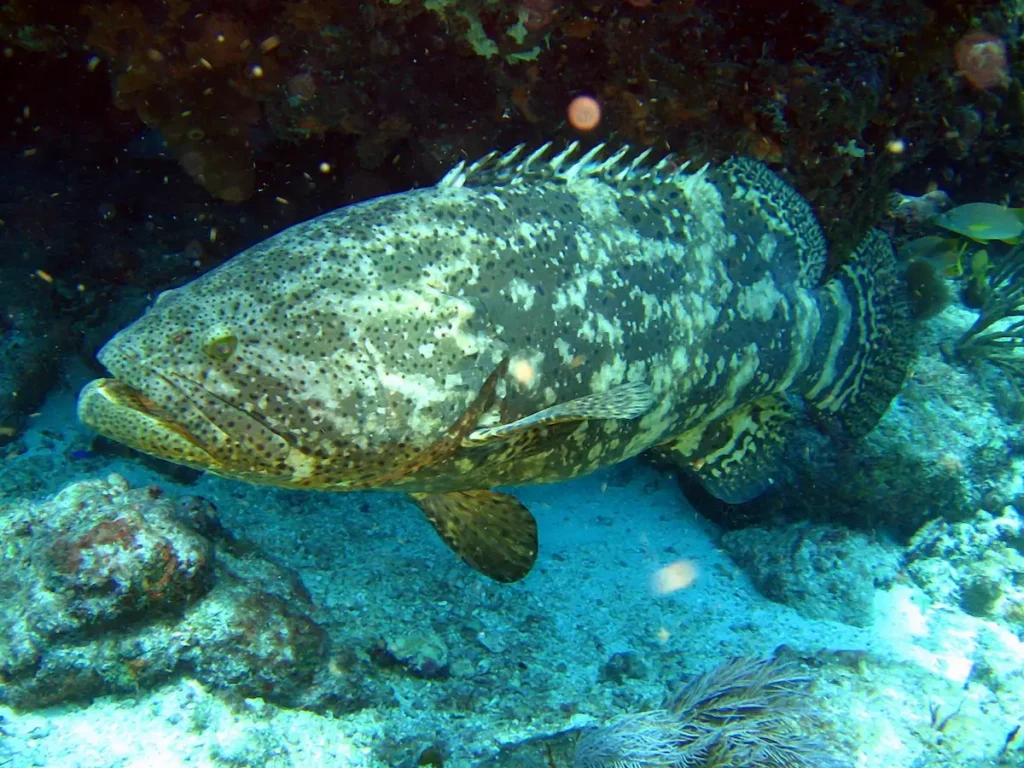Facts About Goliath Grouper
Despite its larger-than-life name, the goliath grouper is still vulnerable

Ranging in size from a small child to a small Volkswagen Beetle, the goliath grouper certainly lives up to its name. This fish is large, no doubt about it.
The goliath grouper is the largest species of grouper in the Atlantic Ocean—they can grow up to eight feet and more than 800 pounds! They also feature a rather grumpy look on their faces due to their incredibly large downturned mouth and tiny eyes. Goliath groupers can typically be found in tropical waters from Florida (where I luckily got to see one) to Brazil, the Caribbean and the Gulf of Mexico.
Get Ocean Updates in Your Inbox
Sign up with your email and never miss an update.
This massive grouper is also considered an umbrella species, which means that other species in their habitat depend on them to survive. This indicates just how important its survival is to the ecosystem it belongs to. These fish act as a top predator and maintain the health of the coral reef ecosystems where they live.
Sure, the goliath grouper may look giant and intimidating but these special creatures offer a lot to their ecosystem and our ocean.
Now that you’re up to speed on their spectacular size, read on for more amazing goliath grouper facts.
Ambush Predator
It’s an ambush! At least that’s what the fish and crustaceans are thinking as they meet the goliath grouper. This larger-than-life fish is known as an ambush predator, they find their prey opportunistically as they wait patiently for prey and use their large mouth to create a suction like vacuum and ingest a large rush of water, swallowing their food whole before they have a chance to escape. During their feedings, goliath groupers typically aim for smaller fish, spiny lobsters and even juvenile sea turtles.

Mangroves
Adult goliath groupers are coral reef lovers, they spend their days stalking their prey near these reefs where they don’t have many natural predators. Juvenile goliath groupers however grow up in mangrove habitats. Mangroves live in coastal muddy waters and are made up of trees and shrubs growing in extremely thick clusters. These thick clusters are perfect for young goliath groupers to hide from potential predators between the submerged roots. Once they grow large enough to protect themselves, these fish leave the mangroves and make their way to the coral reefs where they can be at the top of their food chain.
Territorial
This fascinating fish has also been known to exhibit territorial behavior when feeling threatened or surprised. This behavior includes opening their rather large mouths wide, shaking their bodies and sometimes producing a loud boom sound using their swim bladder (I know I’d get the chills if I heard that underwater). These noises are described as territorial warnings and can also be heard from the goliath grouper during spawning and from juvenile goliaths in mangroves.

Spawn in Massive Groups
Although these fish are typically found alone looking for food along shady caves and coral reefs, goliath groupers can also be found in large groups at specific locations to spawn. These groups can consist of more than 100 groupers of all sizes from big to bigger to biggest! During their spawning season (typically between July and September), males and females will release their sperm and eggs into the ocean and let the currents do the rest. Only a very small portion of the millions of microscopic eggs spawned survive to be giant goliath grouper. These fish have been known to travel 100 miles to reach the spawning location—now that’s dedication.
Historically Vulnerable Species
Historic overfishing and habitat loss due to human developments (especially in their mangrove habitats) have greatly contributed to the depleted goliath grouper population. Despite its menacing name, goliath grouper populations globally are still vulnerable. In addition, they grow quite slowly (living up to 50 years) and their nursery habitats are impacted by habitat loss, contributing to their slow population replenishment.
These amazing and ancient creatures, like many other ocean friends, are highly susceptible to the impacts of overfishing, climate change and habitat loss. Interested in learning more about the goliath grouper and other fin-credibly large fish? Check out our Wildlife Library and advocate for your favorite ocean animals by visiting our Action Center.